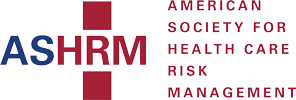An ordinary day at a physician practice in Birmingham, Alabama suddenly turns dramatic. A patient at the front desk is demanding to see the doctor. When he is not able to immediately have an appointment, his aggressive behavior escalates. The patient is yelling obscenities and gesturing in a threatening manner to anyone in sight. Staff attempts to defuse the situation are unsuccessful. As the patient storms out, he turns on the staff and patients in the waiting room and releases a jolt of pepper spray (Miller 2015). Some require first aid as a result of the attack. This is one of many such incidents happening with increasing frequency in healthcare settings across the nation.
Violence Response Plan
Are your physician practices ready for such incidents? It is not a matter of “if” violence will occur; it is about “when.” Since most physician practices do not have their own security team, deliberate and well thought out prevention planning is vital. Creating a plan of action for training staff, conducting drills and standing at the ready are essential steps needed to reduce the potential impact of aggression (NIOSH, 2017).
The first step in creating a response plan is to talk with staff or confidentially survey them to learn more about what aggressive behaviors they are experiencing (Taylor, 2013). Make sure that all levels of management in the practice are committed and in sync with the violence response plan. Ensure that all staff participates in required training and regular violence-response drills.
Workplace Readiness
Angry patients and family members are usually simply disruptive. Often a few careful words can defuse the situation. The use of limit-setting strategies can keep unpleasant encounters from escalating into violent behavior.
Here are guidelines to include in a plan to handle aggressive behaviors:
- Do not be drawn into an argument. It is better to simply listen.
- Answer softly, reducing the volume and slowing the cadence (pace) of your speech when a patient or family member is loud and angry.
- Lead the offending party away from the common area. Remove the “audience.”
- Avoid being backed into a corner. When escorting a patient away from the waiting room or public areas, let the patient enter the office, exam room or meeting space first, with staff remaining at the door.
- Refer the angry party to someone with perceived authority. This communicates his/her concerns are being taken seriously. This person may be the office manager, billing supervisor or a physician.
- Know staff hot buttons and when to ask for help.
- Avoid becoming defensive. Remain calm. Do not try to justify or explain.
- Take threats seriously but refuse to be “baited.”
- Have another person nearby when someone is holding a discussion with a volatile person and have a prearranged signal that can be given to indicate help is needed or even that security or the police need called.
- Never meet with angry, threatening patients after hours or when no one else is available as backup.
- Do not tolerate abusive phone calls. Train staff how to respond to the caller in a calm manner, communicating that profanity, abusive, threatening language is inappropriate and the conversation is being terminated. After hanging up, the plan should include how to record the incident and the responsible office authority to whom it should be reported.
Foremost, remember that safety comes first. Staff should never hesitate to call “911” when there is a perceived threat to the personal safety of anyone in the work place. Having an aggression-combating plan that includes employee input as well as training puts healthcare office staff in position to successfully handle those ordinary days that can devolve into dangerous situations.
Resources:
Miller, Megan. (May 1, 2015).Trussville man charged with criminal use of pepper spray. WIAT CBS News. Retrieved from http://wiat.com/2015/05/01/trussville-man-charged-with-criminal-use-of-pepper-spray/
Taylor, Holly, (2013). Patient Violence Against Clinicians Innovations in Clinical Neuroscience – Managing the Risk March; 10(3): 40–42.Retrieved from: https://www.ncbi.nlm.nih.gov/pmc/articles/PMC3638847/
The National Institute for Occupational Safety and Health (NIOSH) (2017) Occupational Violence. Retrieved from: https://www.cdc.gov/niosh/topics/violence/
Joan M. Porcaro, RN, BSN, MM, CPHRM, is a senior risk management consultant at the Mutual Insurance Company of Arizona.








